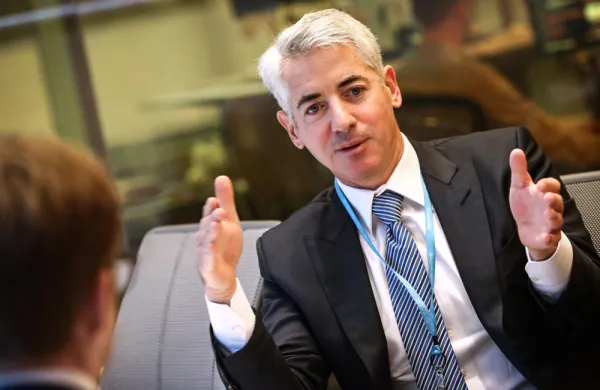Wealth management is a tricky business. Almost every manager promises unique strategies and outsize returns, but most strategies are pretty boilerplate.
In The Aspirational Investor: Taming the Markets to Achieve Your Life’s Goals, Ashvin Chhabra tries to create a different scenario for successful investing. It’s not the money left when you die that counts, but how you made that money and the legacy it has secured that truly matter, he says.
A little too idealistic and impractical, you might say. Perhaps. But Chhabra is trying to introduce some complicated investment ideas into money management. And although he isn’t entirely successful, the effort is commendable.
Chhabra’s aspirational investor is someone who focuses his or her investment strategy not on trying to beat the market but on achieving personal goals and carefully managing risk. In sketching out his approach, he draws on modern portfolio theory as well as conventional strategies such as indexing, yet he emphasizes that the true metric is the aspiration of the investor.
Chhabra is no neophyte adviser. A former CIO of Merrill Lynch Wealth Management, he recently became president of Euclidean Capital, the family office of James Simons, the cold war code-breaker-turned-founder of quantitative hedge fund firm Renaissance Technologies. He has a Ph.D. in applied physics from Yale University.
Three seemingly incompatible objectives should underpin every wealth management plan, says Chhabra. Investors should first provide for financial security in the face of known and unknown risks. Second, they should recognize what they need to maintain their standard of living in the face of inflation and longevity. Third, they should focus on the need to pursue aspirational goals, be it for personal wealth creation, to create a positive social impact or to leave a legacy.
In an environment in which most asset management strategies fall into one of two camps — the active management camp, which points to the successes of Warren Buffett and George Soros as proof that one can outperform the market, and the efficient market camp, which argues that most active managers add little value — Chhabra says investors should put the accent on their personal goals and targets. “Investing shouldn’t just be about the markets, it should be about you,” he writes.
This is where Chhabra is at his strongest and his weakest. He successfully introduces the notion of personal goals and aspirations into the discussion, along with a notion of social responsibility. (You might be getting your highest market returns from energy companies and multinational mining monopolies, but is that where you want to be?) But he doesn’t hand the reader a tool kit to get going. In a digital era in which risk measurement and forecasting tools are accessible to even a novice investor, that absence is noticeable.
Still, Chhabra is an astute scholar of asset management models. He has written extensively on the work of Harry Markowitz, who won the Nobel Memorial Prize in Economic Sciences for his pioneering work on the importance of diversification in portfolio construction. Chhabra also has great admiration for Buffett and Soros. Perhaps most important, he lauds the manner in which endowment managers such as Yale CIO David Swensen and former Harvard Management Co. CIO Jack Meyer have designed portfolios that have a long-term orientation and deliver strong returns. Although the models work for those who designed them and used them, they may have little value for others, says Chhabra.
Yale’s endowment model, for example, contains a mix of traditional and alternative assets. Although the portfolio has had its ups and downs, it doesn’t face the same constraints that most investors do. When Yale fell short of its actuarial targets during the global financial crisis, it simply borrowed in the bond market. Swensen’s model may be elegant and effective, but it is not practical for the small investor.
Similarly, Buffett’s active management style works because it relies on a mix of companies that complement one another in terms of risk and reward. The common investor can’t build his or her own Berkshire Hathaway, though.
Chhabra doesn’t suggest trying to copy the endowment model or the styles of Buffett and Soros, but he advises readers to understand why they work and why they may not work for you.
Get more on wealth management.






